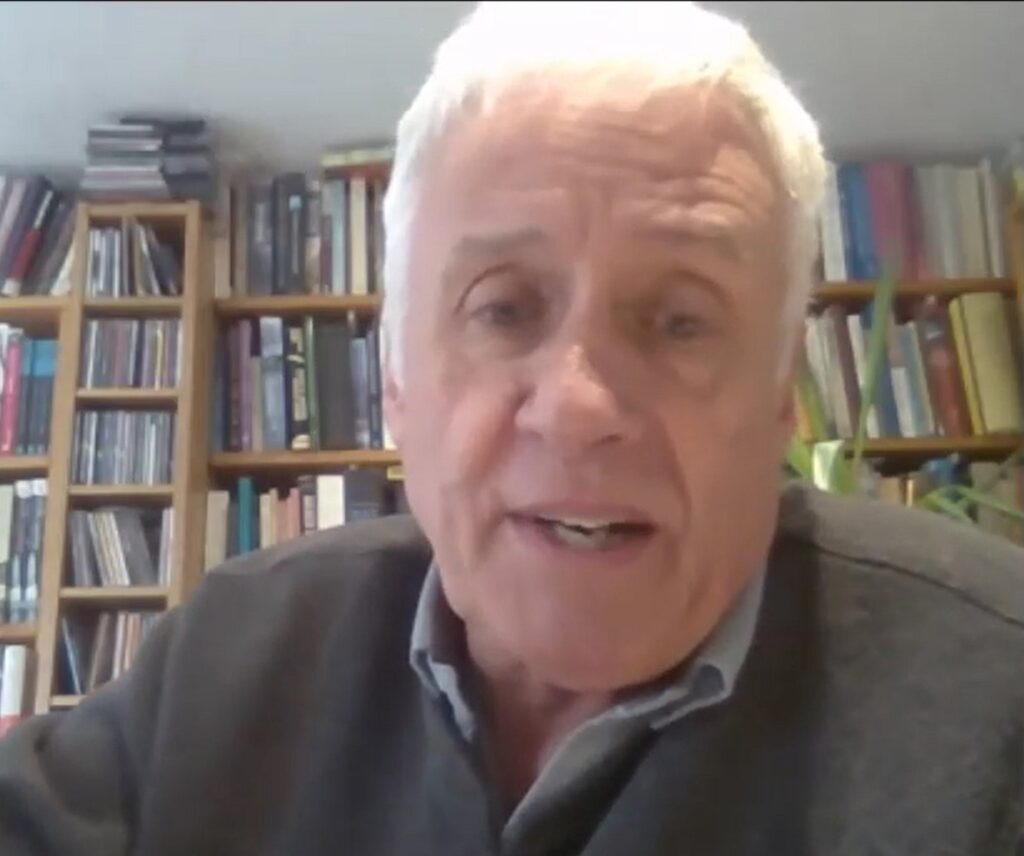Our speaker Bob Moore, Professor Emeritus of 20th Century European history at Sheffield University, who spoke to us via Zoom from his home in Oxfordshire. Bob started by explaining how, before 1918, Redmires/Lodge Moor had been used as an exercise and summer camp location for local militia from the 1860s, including the Sheffield City Battalion and others. There was a short-lived attempt to establish a racecourse in 1875-76, evidenced by some structures having been left on site. The location was also apparently used for organised boxing fights in 1912-1913. It had also been used as grazing land in the summer months before it became a military training camp in 1914.
As an interesting diversion Bob explained how John Laurence Hall, originally from Sheffield, had gained an aviator’s certificate No. 291 on September 17, 1912 and reportedly flew two chimpanzees over Redmires racecourse in his Bleriot in November 1912. A picture shows him posing beside the Avro 500 in which he participated in the race for the 1914 Brighton Cup. The site became a Prisoner of War camp in 1916. Bob explained how few official War office records were available for his investigations but listed alternative sources of information as shown below:
Government ministries (Foreign, Agriculture and Security)
Local newspapers (limited by censorship)
Contemporary letters and postcards (limited by censorship)
Diaries and memoirs
Red Cross reports
Photographic archives
Archaeology
The camp was evacuated by the Army in summer 1918 but was pressed into service as an officer camp as more German POWs were brought to the UK. These included both Heer and Kriegsmarine. Most remained as hostages against the terms of the armistice and peace treaty of June 1919 with repatriations beginning in October and November of that year. A prize capture off Sicily, when his U-boat was sunk was Karl Doenitz. He was brought to the UK in October 1918 to be interogated and was apparently appalled by Republican sentiments among his fellow officers. Fearing prosecution for war crimes he began to feign madness and was transferred to Hospital in Didsbury, Manchester before being repatriated on medical grounds in July 1919.
The camp was decommissioned by the Government In 1920 and was taken over by the local authority with plans for an open-air school. In 1925 it was adapted for use as an annex for Lodge Moor hospital during epidemics of that year. It continued in use until 1935 when the site was abandoned and some of the huts were burned under Fire Brigade supervision.
In the Second World War the Site was recommissioned as Camp 17, a base camp for Italian POWs with the first cohorts arriving in July 1941. They were rapidly distributed to other ‘working’ camps across the country, so only a small number of permanent staff remained, with just one medical officer. Only a very few Italians were used as labour inside or outside Camp 17. It was used to contain those unwilling to work, NCOs who could not be required to work and those sentenced to custodial sentences of more than 28 days for breaches of regulations.
A small cohort of Italians were still in the camp in summer 1944, being staff and criminals. The camp was now needed to house German prisoners taken after D-Day for processing before they went sent elsewhere. Superficial attempts were made to weed out possible war criminals, fervent Nazis and non-Germans. The camp once again became a transit point retaining only those too dangerous to be reallocated. The population of the camp rose to 12,000 by November 1944. There were three escape attempts in early 1945. All were recaptured within days near Rotherham or Doncaster. A Luftwaffe officer was shot while trying to escape in March 1945. There was an infamous case of Unteroffizier Gerhardt Rettig, killed by other prisoners. He was falsely accused of betraying an escape tunnel and was beaten to death. The perpetrators were identified and four were brought before a military court. Two were convicted and were sentenced to death and hanged at Pentonville prison on 16th November,1945
After the war, films were made of Nazi atrocities and the benefits of democracy. An assessment centre was set up to weed out hardened Nazis and the place was used as a continuing penitentiary labour camp; there was as a ready labour supply for the harvest, and inmates were also sent to satellite camps. It became a reception camp for Germans arriving from the US and a repatriation centre from 1947 onwards. The last inmates, Ukrainians, were finally dispersed in December 1948.
It was agreed unanimously that Bob had given us a most Informative talk based on information which he had been able to secure, but inevitably some will not reach the public domain for security reasons until the statutory hundred years after 1944 has elapsed.

